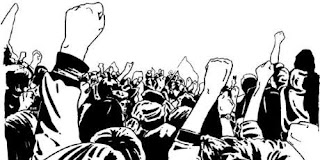Guiding Question: Was Indian Removal justified? Objectives: Collaborative: Students will complete a performance task on Indian Removal by reading and annotating, completing a preparation sheet, and writing a CEEEEL response. Standards: 8.8.1 Discuss the election of Andrew Jackson as president in 1828, the importance of Jacksonian democracy, and his actions as president (e.g., the spoils system, veto of the National Bank, policy of Indian removal, opposition to the Supreme Court). RH.6-8.2 - Determine the central ideas or information of a primary or secondary source; provide an accurate summary of the source distinct from prior knowledge or opinions. Do Now (Voice Level 0) 5 minutes: What do you already know about life for Native Americans in the United States? Where did you learn this information? Whole Group (Voice Level 0) 10 minutes: Indian Removal Notes Direct/Collaborative (Voice Level .5) 90 m...









